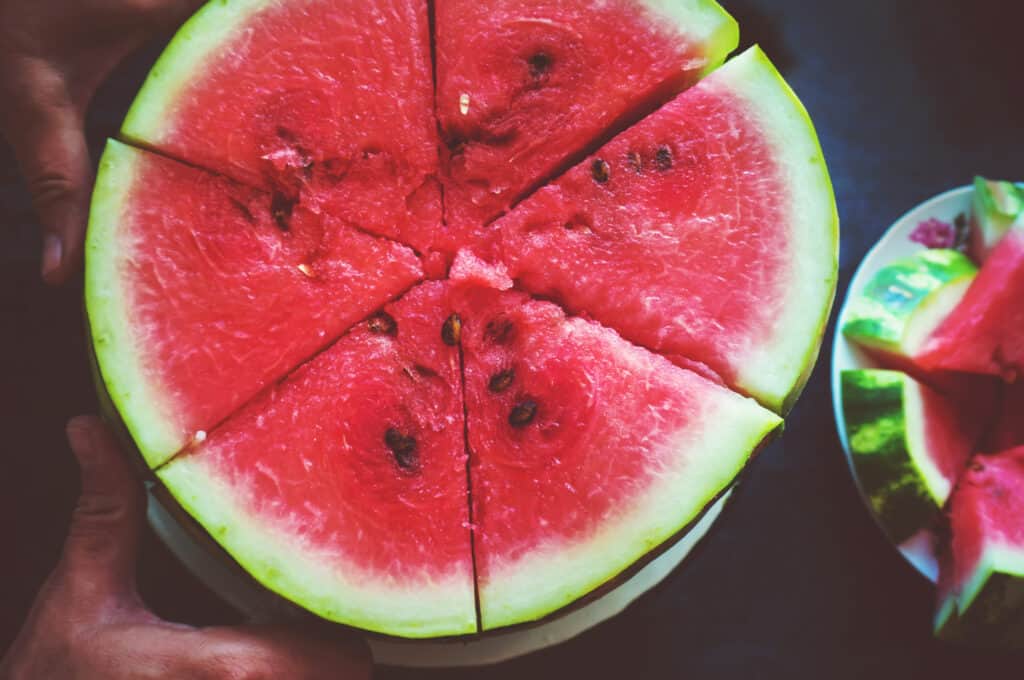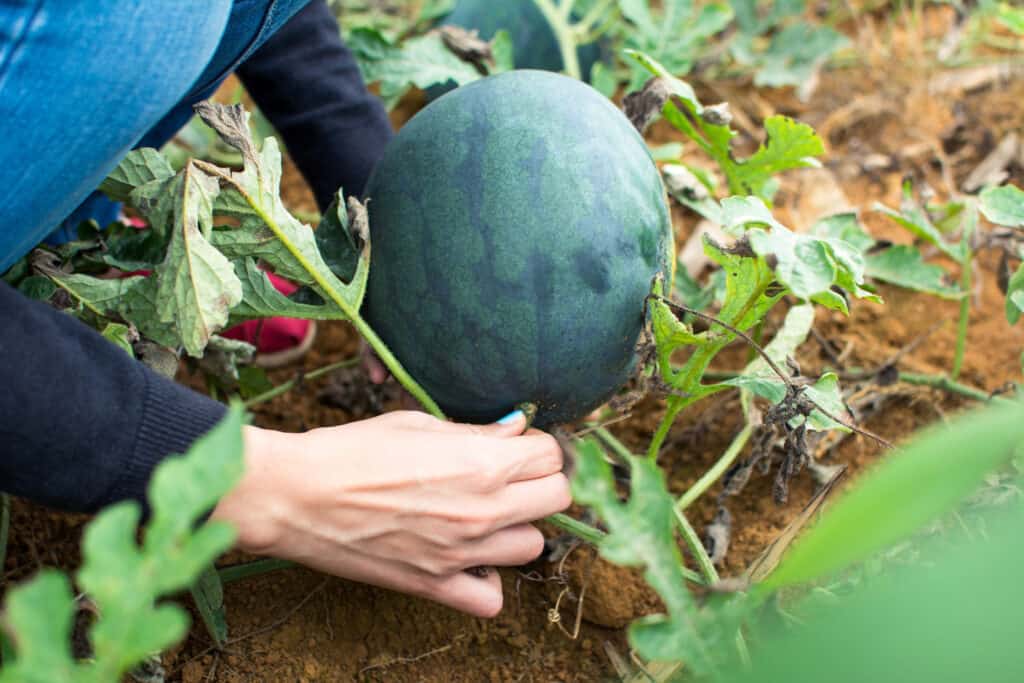After growing and harvesting dozens of watermelons over the years—from compact icebox types to sprawling heirlooms—I’ve learned that how you store a watermelon makes all the difference in flavor, texture, and longevity. Whether you’re enjoying a fresh slice on a summer afternoon or preserving your bounty for the off-season, proper storage ensures you get the most from every melon.
Below, I’ll walk you through the best ways to store watermelon for short-term freshness and long-term preservation, including tips for freezing, pickling, and dehydrating based on hands-on experience in the garden and kitchen.
How to Store Whole Watermelon
Freshly harvested or store-bought whole watermelons can be kept uncut and unrefrigerated for about 10 to 14 days. I’ve found that placing them in a cool, dark place—like a basement, pantry, or cool garage—helps maximize their shelf life. Temperatures around 55°F to 60°F (13°C to 16°C) are ideal. In my experience, when temperatures dip below 50°F (10°C), the fruit tends to decay quickly, becoming mealy or mushy within a few days.
Avoid storing watermelon near ethylene-producing fruits like apples, bananas, or tomatoes. Ethylene gas causes the rind to soften and thin prematurely, which shortens the watermelon’s life and makes it more prone to spoilage.
How to Store Cut Watermelon
Once a watermelon is cut, its shelf life shortens significantly. Wrap slices tightly in plastic wrap or transfer chunks to an airtight container and refrigerate immediately.
- Refrigerator storage time: up to 4 days
- Best taste and texture: within 2 days
I like to store cut watermelon in shallow glass containers, which helps keep it cold and prevents the build-up of excess moisture. Avoid stacking pieces too tightly, or they may break down and get soggy.
How to Freeze Watermelon
Freezing watermelon is easy, but the texture changes after thawing—it becomes mushy. That’s why I recommend freezing watermelon only for smoothies, sorbets, or drinks, not for fresh eating.
Steps to freeze watermelon:
- Cut the watermelon into cubes or balls, removing seeds.
- Place pieces in a single layer on a parchment-lined baking sheet.
- Freeze until solid (about 4–6 hours), then transfer to freezer-safe bags.
- Label and store for up to 8–10 months.
Tip: I often freeze overripe watermelon in ice cube trays for easy blender use later. It’s a zero-waste way to preserve fruit that might otherwise go bad.
How to Pickle Watermelon Rind
One of the best ways to preserve watermelon is by pickling the rind. If you’ve never tried it, you’re missing out—it’s a classic Southern tradition and a personal favorite of mine for charcuterie boards and sandwiches.
How to pickle watermelon rind:
- Peel the green skin from the rind and cut the white flesh into 1-inch chunks.
- Boil in salted water for 10 minutes; drain.
- Prepare a pickling brine: vinegar, sugar, cloves, cinnamon, and mustard seeds.
- Simmer the rind in the brine for 30–45 minutes.
- Pack into sterilized jars and seal.
Pickled rind will keep in the refrigerator for several weeks, or you can water-bath can them for shelf-stable storage.
How to Dehydrate Watermelon
Dehydrated watermelon—sometimes called watermelon jerky—is a chewy, sweet treat that kids and adults love. I started dehydrating melon a few summers ago, and it’s now a staple in our trail mix and hiking snacks.
Steps to dehydrate watermelon:
- Slice the watermelon into thin strips or small cubes (¼-inch thick or less).
- Remove seeds and pat pieces dry with paper towels.
- Arrange in a single layer on dehydrator trays.
- Dehydrate at 135°F (57°C) for 8–12 hours, or until leathery and slightly sticky.
- Let cool, then store in airtight containers in a cool, dry place.
Pro tip: For variety, sprinkle pieces with chili-lime seasoning before drying—it gives a delicious sweet-spicy twist.
My Experience
Storing watermelon properly can extend its freshness and open up new ways to enjoy the harvest all year long. Whether you’re slicing it for the fridge, preserving the rind in jars, or drying it into chewy snacks, a little know-how goes a long way.
As someone who grows melons in raised beds in a warm climate, I’ve tested these methods season after season. Each technique lets me enjoy the sweetness of summer—even in the middle of winter.
Have you tried any of these watermelon preservation methods? What’s your favorite way to store or enjoy watermelon?

When to Harvest Watermelon
There are several ways to know watermelon is ripe and ready to harvest:
- The fruit is the size you expect it to be at harvest; size varies by variety.
- The tendril closest to the fruit begins to wither, turn brown, and curl. If the tendril is green, the fruit is not ripe. If the tendril is dead, the fruit is ripe or overripe.
- The rind or skin loses its vibrant color and gloss and turns dull and there is little contrast between stripes on the skin.
- The bottom of the fruit where it touches the ground has a large white, cream, or yellow-colored oval spot. The ground spot color at ripeness will vary with variety.
- When you thump the fruit you hear a low punk or thud sound. Unripe melons make a sharp ping sound when rapped.
Watermelons on the same plant typically ripen over a two-week period. When the first melon is ripe, the others ripen shortly.
When the tendril closest to the fruit just begins to turn brown and wither, the harvest will come in about a week. A week before harvest, decrease watering—water just enough to prevent the vine from wilting. Withholding water from a melon will cause the sugars in the fruit to concentrate. Too much water reduces sweetness.
In cool summers, the ripening process can be very slow, and the number of days to harvest will increase.

How to Harvest Watermelon
- Harvest watermelons by cutting the stem with a garden lopper or sharp knife close to the fruit.
- Handle the fruit gently to avoid bruising and breaking.
- Cool watermelons immediately after harvest to remove field heat and prolong storage life. Place melons in a cool, shady spot or put them on ice.
Watermelons Overview Post:
How to Grow Watermelons from Seed to Harvest: Ultimate Guide for Sweet, Juicy Success
Melons Overview: The Ultimate Guide to Growing Melons: From Planting to Harvest
Related Posts:
Starting Watermelons Right
- When and How to Start Watermelons: A Seed-Starting Guide
- Watermelon Temperature Needs: Warmth, Frost, and Growth Milestones
- Soil Prep and Mulching Tips for Healthy Watermelons
Planting & Space Planning
- How Much Space Do Watermelons Need?
- Growing Watermelons in Containers: Tips for Small Gardens
- Growing Watermelons Vertically: Tips for Small Gardens
- Companion Planting for Watermelons: What Works and What Doesn’t
Watermelon Care Through the Season
- Caring for Watermelon Plants Through the Season
- Watering Watermelons: How Much and How Often
- How to Feed Watermelons: Fertilizer Schedules and Organic Options
- Watermelon Pollination Tips: Helping Watermelons Set Fruit
Dealing with Pests and Diseases
Knowing When to Harvest
Choosing the Right Varieties
- Watermelon Varieties by Size: From Personal Melons to Giants
- Top Watermelon Varieties for Short Growing Seasons
- Best Long Vine Watermelons for Large Gardens
- Best Watermelon Varieties for Small Spaces (Bush & Short Vines)
- How to Grow Seedless Watermelons Successfully
Enjoying the Harvest
- Preserving Watermelons for Fresh Eating and Preservation
- Watermelon Flavor Pairings to Complement Your Harvest Table
How to Serve Summer and Winter Melons
Garden Planning Books at Amazon:
- Vegetable Garden Almanac & Planner
- Kitchen Garden Grower’s Guide Vegetable Encyclopedia
- Vegetable Garden Grower’s Guide
- Tomato Grower’s Answer Book
Get more harvest tips for these crops:
Learn when and how to harvest your favorite vegetables for the best flavor and texture. Get storage tips for each crop. Click on the vegetable you are growing below.
- Artichoke
- Arugula
- Asparagus
- Beans
- Beets
- Broccoli
- Brussels Sprouts
- Cabbage
- Cantaloupe — Melons
- Carrots
- Cauliflower
- Celery
- Chard
- Collards
- Corn, Sweet
- Cucumbers
- Eggplant
- Endive and Escarole
- Garlic
- Jerusalem Artichoke
- Kale
- Kohlrabi
- Leeks
- Lettuce
- Melons
- Okra
- Onions
- Parsnips
- Peas
- Peppers
- Potatoes
- Pumpkins
- Radicchio
- Rhubarb
- Rutabaga
- Spinach
- Squash, Summer
- Squash, Winter
- Sunchokes
- Sweet Potato
- Swiss Chard
- Tomatillo
- Tomatoes
- Turnips
- Watermelon



